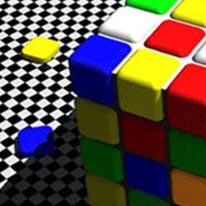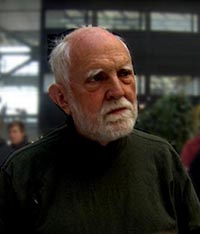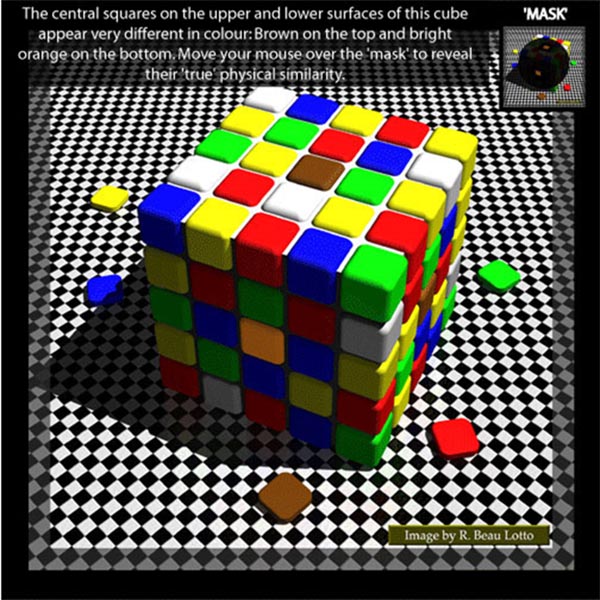
Question: A tree falls in the forest when nobody is around to hear it. Does it make a sound?
Answer: It depends on whether you take ‘sound’ to mean compression waves in the air or auditory sensation.
Thus we dispose of an equivocation posing as a philosophical problem. And yet, lurking beneath the surface of this bit of sophistry are serious questions. There is the metaphysical mind-body problem: how do conscious sensations find a place in a natural world fully describable in terms of energy distributions in space-time? And there are the twin sciences of physical and psychological acoustics in which the relevant variables such as frequency and pitch are at the same time distinct and deeply entwined.
Now suppose that you are looking at three yellow patches. The first of them is a colored shadow. In a room whose ambient illumination is daylight, there is a spotlight with a blue filter, shining on an opaque object that casts a shadow. The shadow looks yellow. The second patch is produced on a video display. The third patch is a paint chip. Are all of these patches really yellow—in the same sense of “yellow”? We could reply that “really” here suggests that there is just one underlying concept of color before us when in fact there may be an equivocation. Let’s see why there might be a problem with the idea that there is one preferred concept of color.
Here is how the argument might proceed. In the first case, a spectrophotometer would indicate that the spectral profile of the shadow is identical with the profile of the ambient illumination, and this is not yellow. This result is confirmed visually by viewing the shadow through a hole in a screen that blocks out the surrounding area. The colored shadow is a special case of simultaneous contrast, which is a product of your visual system. Its yellowness is thus a mere appearance.
In the second case, a close-up of the video screen reveals that there are just three types of colored lights — green, red, and blue. None of them is yellow. The area only looked yellow because of optical mixing in your eye. Once again, the yellowness is only an appearance.
We are left with the paint chip. Here we seem to have a paradigmatic case of a color quality securely anchored to a physical object. But let’s look a little deeper. First, suppose that the paint formulation is such that chip changes its color appearance as the illumination changes, perhaps even from one phase of natural daylight to another. Which of these illumination conditions reveals its true color? (Other sorts of materials are even more problematic, such as dichroic glass or bird feathers whose displayed colors depend upon viewing angles).
If you think that these are aberrant conditions, put them aside, and consider a nice stable Munsell yellow chip. Unless it is large enough to cover your entire field of view (in which case its perceived color will quickly fade into invisibility), it will be seen against some sort of surround. Let that surround be a neutral gray. But since varying the lightness of the background will alter the chip’s appearance, which gray will enable us to perceive it correctly?
Or take a more extreme but instructive circumstance. Surround the paint chip with bright white light, and the yellow is replaced by brown. Alternatively, take a chip that you would normally describe as brown, keep its illumination constant, but dim its surroundings, and it will appear yellow or, depending on the particular choice of brown sample, orange. This figure shows the effect for an orange sample. The interactive version can be seen on Beau Lotto’s webpage, www.lottolab.org.
It is important to observe that brown is not just a dim yellow, but rather a blackened yellow; if the surrounding is kept constant and the illumination is progressively dimmed, the chip will continue to appear yellow all the way down to the point of invisibility. Brown is a contrast color, just like black itself. If a gray scale is viewed with a lamp equipped with a dimmer, as the illumination increases the gray scale expands in both directions. By adding light, not only do whites become whiter, blacks get blacker.
The upshot is that if you dismiss the yellow colored shadow because it is a contrast color, on the same grounds you must dismiss as well the browns and blacks of everyday life, and these are surely also paradigmatic colors. Put it another way: our yellow chip is also a brown chip. What color it is depends not upon its intrinsic nature but upon the company that it keeps. So if colors are what we initially thought them to be, none of our samples is really and truly yellow. If we are to avoid this unpleasant conclusion, we must refine our notion of color.
Read more in part 2 and part 3 of the Three Concepts of Color: A Philosopher’s Journey series.
About the Author

C L Hardin is Professor of Philosophy, Emeritus at Syracuse University. He is the author of Color for Philosophers: Unweaving the Rainbow (Hackett: 1988, 1993).




Leave a Reply